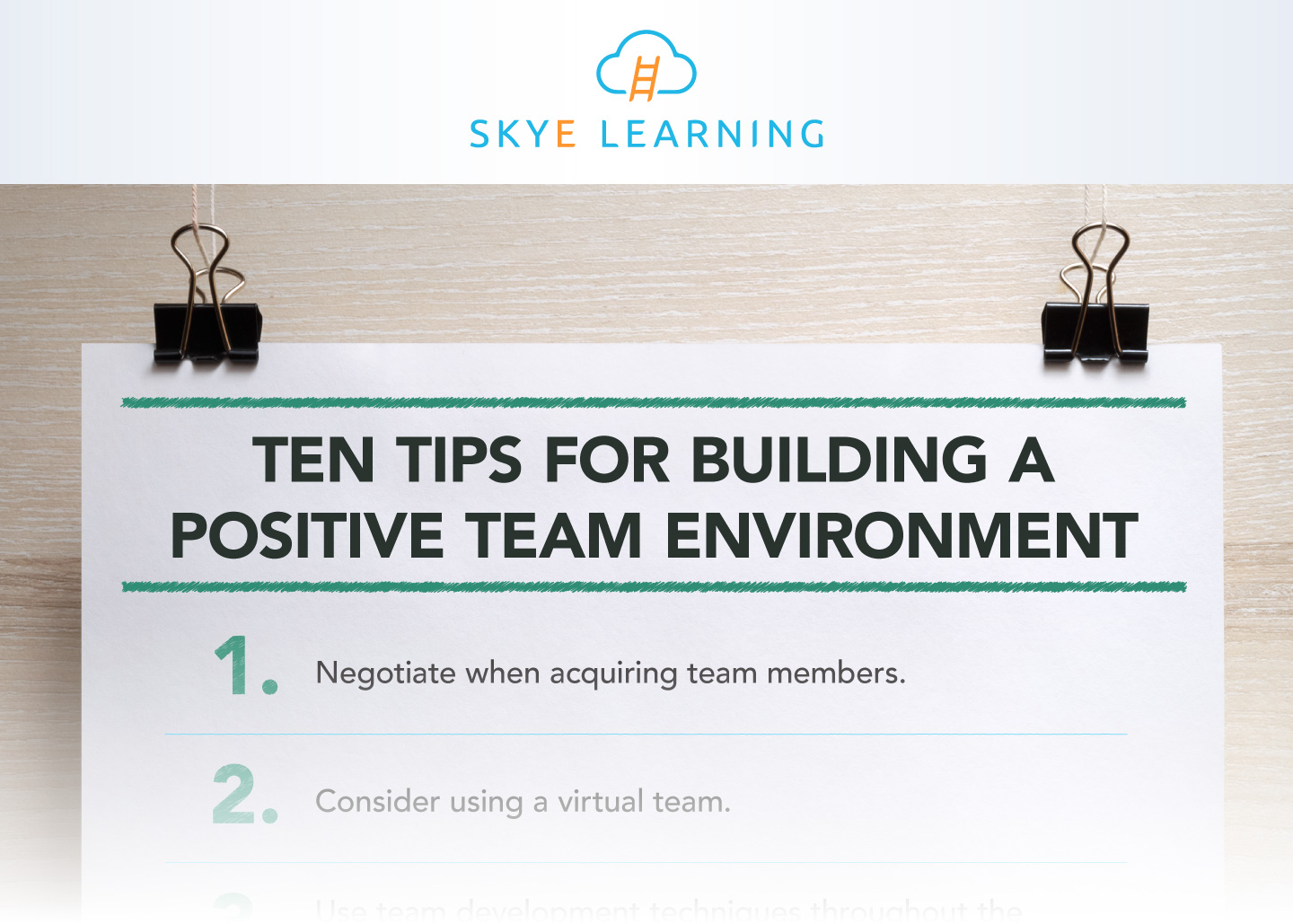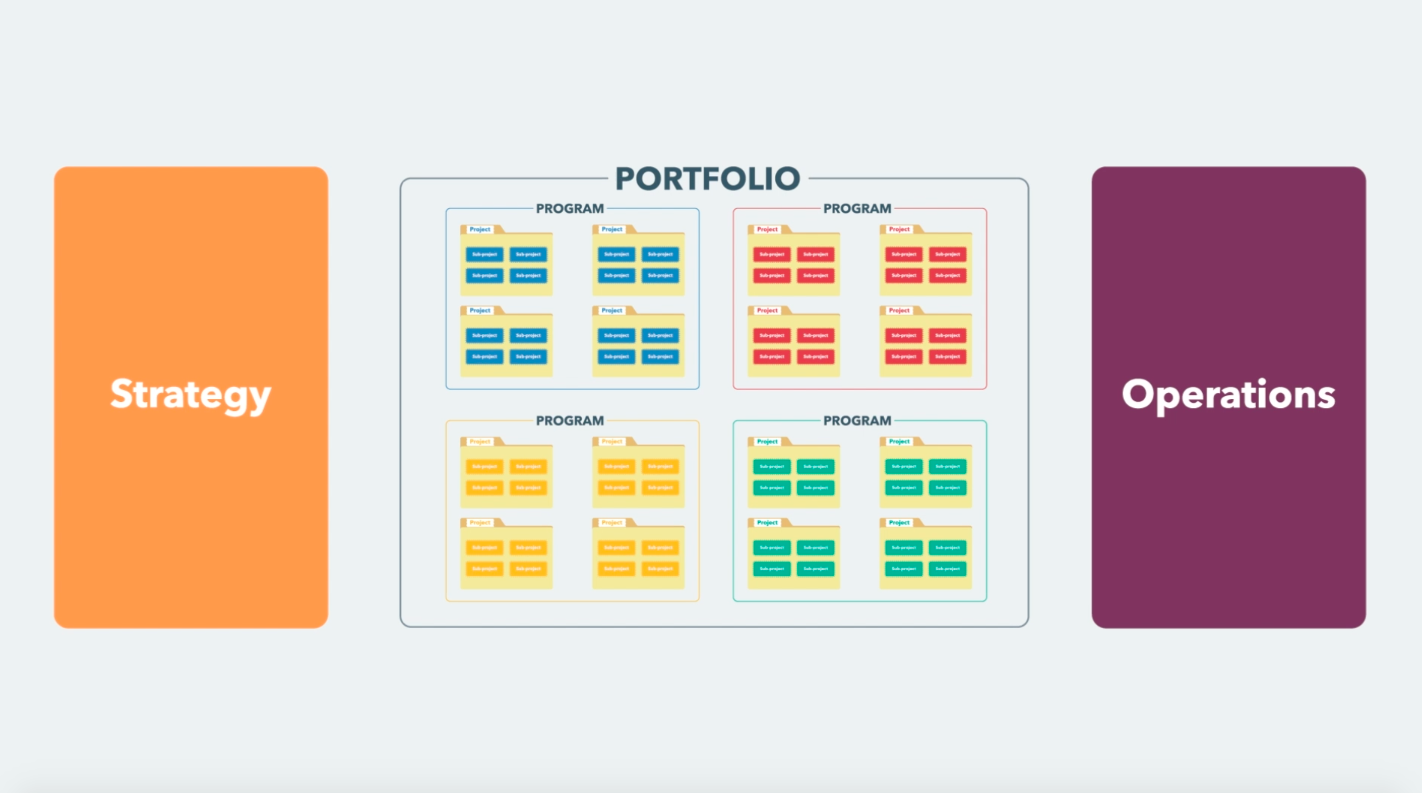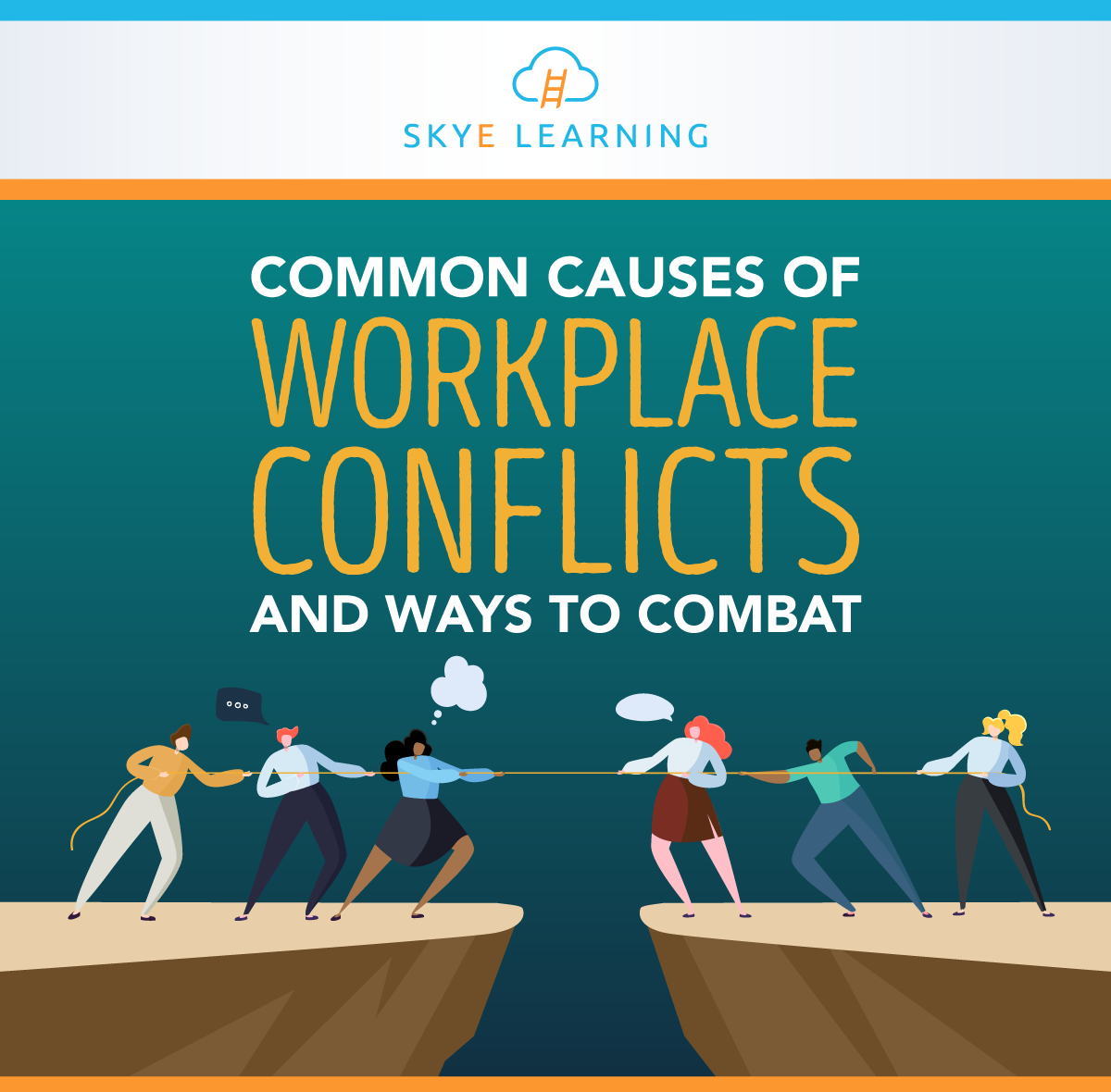As part of its "Project Oxygen," designed to improve managerial performance, Google analyzed more than 10,000 performance reviews, feedback surveys, and other reports to figure out what makes a manager effective. After analyzing the data, the company circulated eight behaviors that managers could model to improve the quality of their management. Check out our latest infographic to learn more.
Google’s 8 Behaviors of Good Managers
10 Tips for Building a Positive Team Environment
Once you’ve assembled your team, it’s important to focus on building a positive team environment. As a project manager, you will be responsible for dealing with both the good and the bad. Positive team morale can eliminate project setbacks, issues, and miscommunication. Check out our latest infographic which covers ten tips for building a positive team environment.
What, Exactly, Does an Emergency Manager Do?
They collaborate, they coordinate, and they multi-task: Emergency managers are the people on the spot in times of public crisis. It's their job to support the first responders and handle all the complex logistics involved in keeping people safe when danger strikes. Roderick Fraser, president of Professional Leadership and Management LLC and former Boston Fire Commissioner, explains in our latest Skye Learning video.
Project Managers Can’t Lose Sight of the Overall Project
One of the biggest mistakes a project manager can make? Management consultant Johanna Rothman says it’s the tendency to get involved in the project work itself. “As soon as you get stuck doing the work on the project, your project is doomed because you're not taking a look at the entire context of the project,” she says. Check out our latest Skye Learning video for more of her words of wisdom.
10 Managerial Roles
Management expert Henry Mintzberg has argued that a manager's work can be boiled down to ten common roles. According to Mintzberg, these roles, or expectations for a manager's behavior, fall into three categories: informational (managing by information), interpersonal (managing through people), and decisional (managing through action). Check out our infographic to learn more.
The 4 IT Issues Managers Need to Face
Rapid changes in technology are constantly making headlines—and they’re also making headaches for IT departments and company managers alike. Today’s managers face an increasing scarcity of trained personnel, a rise in security breaches, and a host of other IT problems, all competing for their attention. And doing nothing is definitely not an option: IT is no longer just a business enabler, it is a critical business driver, and businesses ignore the shifting IT landscape at their own peril.
4 Keys to Resource Management
One of the most important, and most complex, tasks for any team leader or project manager is effectively managing the people assigned to the project. Experienced project leaders know that successful projects are not the culmination of elaborate procedures, complicated tools, or elaborate techniques; they succeed because the people involved are integrated, organized, and empowered, which then frees them to put their skills to use in the most effective way possible.
OPM Provides the Path to Optimal Efficiency
For businesses looking to optimize their efficiency, Organizational Project Management (OPM) offers a clear path forward. By aligning projects, programs, portfolios, and operations within a strategic framework, OPM allows leaders to allocate resources and effort in a way that meets the needs of clients, teams, and stakeholders. Our latest Skye Learning video explains how:
What it Looks Like for the Next Generation of Nonprofit Leaders
The storm has been building for years. Now it’s hitting with full force.
The storm currently battering the nonprofit sector is a generational one. Leaders of the nation’s 1.6 million nonprofits are old (the median age for mid- and upper-level nonprofit manager is 52, according to a 2018 nonprofit leadership survey), and getting older. And like a lot of Baby Boomers and older Gen-Xers, they’re ready to retire.
8 Causes and Resolutions to Workplace Conflict
As a manager, it’s your responsibility to oversee the work environment and ensure it’s a safe zone for all employees. Therefore, it is important to understand the causes of conflict and learn strategies to combat these issues. Take a look at our infographic that covers the eight sources of conflict and ways to work it.










.jpg)




